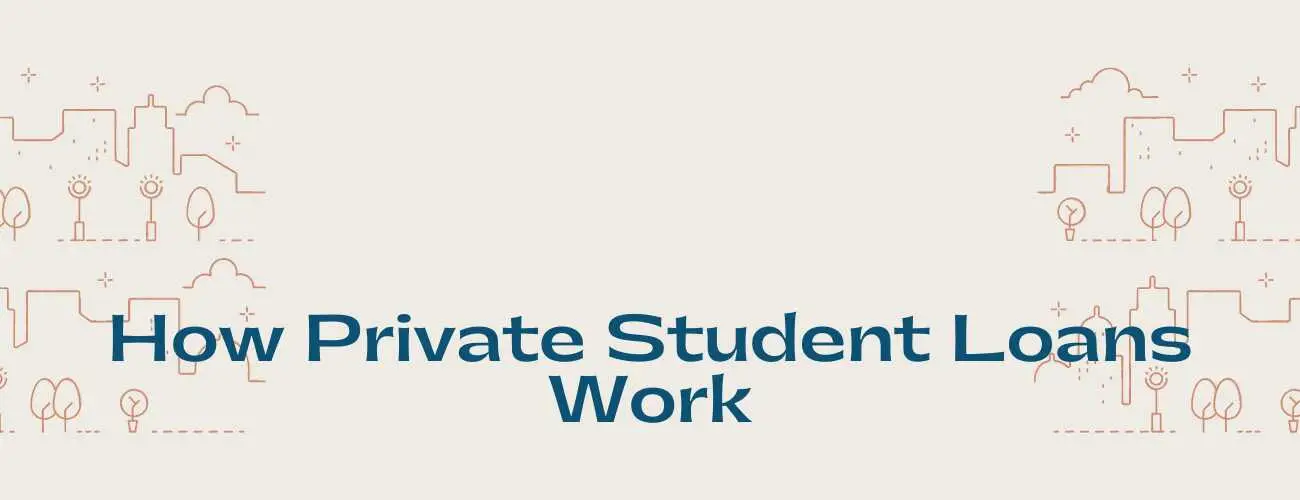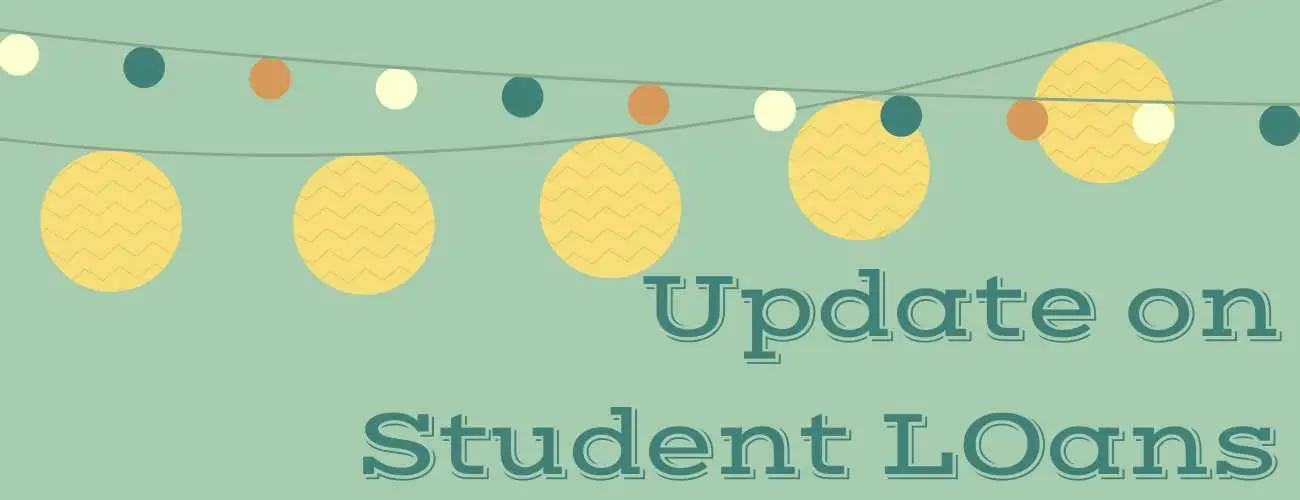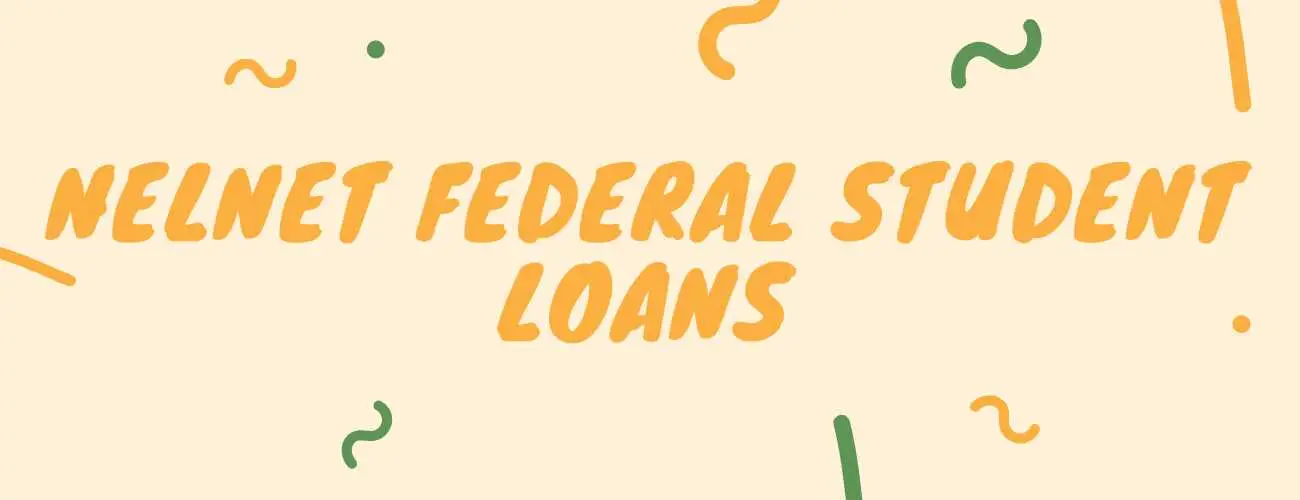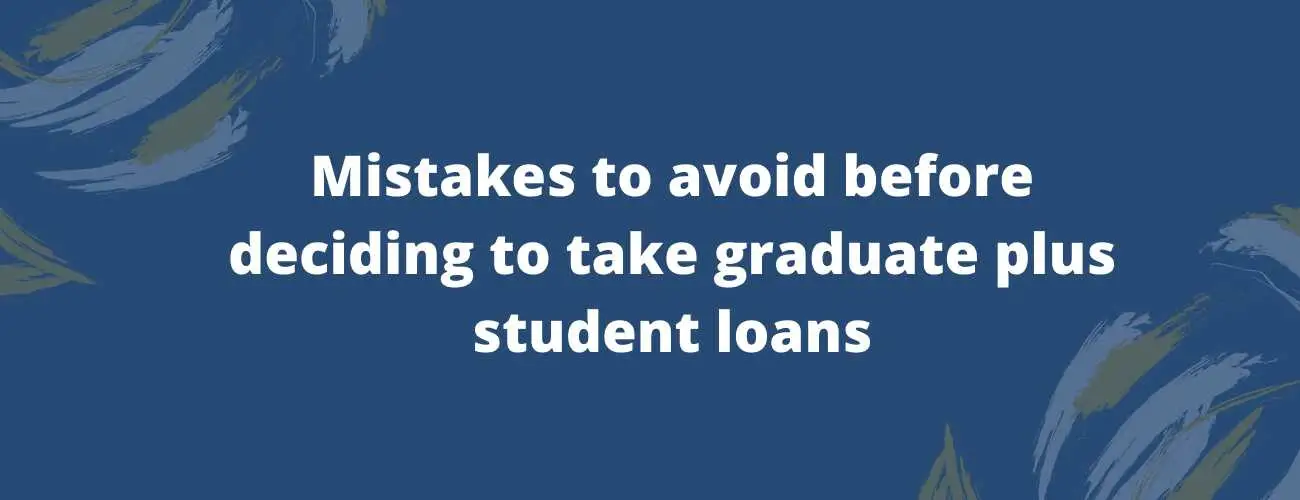Can You Pay Student Loans With Credit Card?
A thorough guide to the best credit card options to opt for in order to pay back your federal or private student loans, with certain questions to help you make the decision.
Updated by Taskeen Fatema on 31st October 2019
In the competitive world that we dwell in today where everyone wants a good educational background in order to push themselves into the vortex of this expeditious world. It runs on the slogan of survival of the fittest. And if not the fittest, you just have to be darn lucky to succeed. And we aren’t going to sit and bank on that to work, are we? As a consequence, cue enters student loans, and in turn student loan debts.
Table of Contents
- Credit card and student loan debt
- Pay Federal Loans with credit card
- Pay Private Loans with credit card
- Advantages of credit card
- Disadvantages of credit card
- Statistical check
- Closing thoughts
Can I use my credit card to pay my outstanding student loan?
As a student loan borrower, you’ve probably felt the pinch of those monthly payments and wondered if there’s a better way to deal with your education debt especially if you are facing financial hitches and the process isn’t as smooth for you. Student loan repayment is one such journey that a borrower must have in-depth knowledge. The thought of there being a shortcut to get done with the obligations must’ve crawled over you, which would have lead one to ponder about alternative methods such as paying student loans with credit cards.
It can be really tempting to look for shortcuts to get rid of student loans and you’re not the first person to come across one of those 0% APR credit card offers that get you thinking of seemingly positive alternatives. It is very important to consider all aspects before delving in that route.
Paying your student debt with a credit card depends on various factors like who services your loans and what kind of card you have.
Let's address it from the perspective of federal loans and private loans, and then concisely summarizing the overall study in advantages and disadvantages.
Pay Back Federal Loans
Some of the rules surrounding student loan payments have recently changed. With effect from the 1st of January 2017, the U.S. Department of Treasury no longer allows student loan payments to be made by credit card. Despite this, some people still try to find ways to transfer their student loan balances to a (cash rewards) credit card.
Loan Servicers
Loan servicers like Nelnet, MOHELA, Navient, Great Lakes and FedLoan Servicing require borrowers to pay through their checking or savings account.
Sometimes it’s better to be safe than sorry in the way that paying via your checking account will keep your student loan repayment on track and stop credit abuse before it occurs.
Read more on student loan servicers
Plastiq - Online Payment Service
That’s where Plastiq, a third-party provider comes in. It claims to be the only company to allow you to use a credit where it’s not typically accepted — in exchange for a 2.5% fee. If you made a student loan payment of $393, for example, you’d have to pay Plastiq a commission of almost $10, burning (perhaps erasing) your card’s potential rewards.
But there are a few things you'll need to consider before making that transfer from your student loan lender to your credit card company as it is always incumbent to know what you’re getting into especially in such matters.
Over the article, we will briefly explore whether you can earn credit card rewards from paying your student loans, how to do it and whether it is a good idea.
Other strategies to pay student loans
There is one important thing to keep in mind before plunging into the option of paying your federal student loan with your credit card i.e. there are many other options that might be a lot easier on your finances that federal loan borrowers are offered.
Here are some other loan-management strategies to explore:
1. Student loan forgiveness: Investigate your eligibility for federal, state and employer-offered repayment assistance programs that could wipe away part or all of your debt.
2. Income-driven repayment: You could decrease your monthly payments on federal loans by switching to an income-driven plan.
3. Student loan refinancing: You also have the option to reduce your monthly dues on federal and private loans by consolidating them together with a bank, credit union or online lender. Just make sure not to miss those federal loan protections that will be lost when you refinance.
4. A cash advance on your credit card: You can use that money to pay off your student loan. And we don’t particularly recommend such a gambit.
A cash advance isn’t the same as just withdrawing money from your checking account or putting a charge on your card. Cash advances come with fees, sometimes as much as 5% of the advance. So if you’re paying off a sum of $30,000 student loan this way, you’ll be incurring an extra $1,500 just in fees.
That's the case even if you ordinarily pay your account balance in full because the rules covering cash advances are different and don't usually have the same grace period you'll receive on regular credit card purchases.
Pay Back Private Loans
Private student loan borrowers very well have the option to pay student loans with a credit card, but they may have to dish out a fee to do so. For instance, College Ave Student Loans allows borrowers to make a one-time payment online using their credit card.
There are broadly two ways you might be able to pay your student loans with a credit card. You can try to make monthly payments using your card, or you can use a balance transfer to pay off your student loan in full, effectively moving the debt entirely to your credit card account.
But what if you consider paying back your student loans with your student credit card and earn some rewards in turn for all that spending? Is that a good idea? It is important to review all such questions and ideas before making a decision.
However, experts are sharply divided over this question. Moreover, because some loan providers don’t even offer this option – they require borrowers to make payments via checking or savings accounts, in that case, you might not even have a decision to make.
What if my loan balance is small?
If you have a relatively small loan balance, another creative solution to potentially reduce or to an extent, even eliminate student loan interest rates is by using a balance transfer card that specifically has an introductory 0 percent APR deal. The longer the introductory period, the better as it will give you more time to pay off your student loans at the reduced interest rate.
Make sure to first find out if the credit card company allows balance transfers to be used for paying off student loans, and check for any fees, such as balance transfer fees which may potentially add more expense to the process. Minimum fees can apply, which can be quite disastrous in the case of making ordinary student loan monthly payments using a balance transfer.
If you make a $100 payment and your card charges a $10 minimum fee, then you're effectively paying 10% – which can be one to two years' worth of interest on the student loan.
Primary Benefit of Balance Transfer Card
The primary benefit here is to take advantage of the introductory-APR.
If you have a student loan and want to know how much you’ll pay in interest over time, you can use Bankrate’s student loan calculator. Moreover, even if you use a balance transfer method that involves a low promotional rate, the big question is whether you can get your balance paid down in full before the promotional rate ends.
Keep in mind that most balance transfer cards that come with introductory APRs require a very good credit background to qualify. And you should confirm with the card issuer and your loan provider before you apply for the card that both parties will allow the transfer to occur.
And if you’re still struggling with your private loans, ask your lender if you could adjust your repayment plan or perhaps postpone payments using a form of forbearance.
Now that we have a general idea of payment of student loans by credit cards, be it federal loans or private loans; let us move on the pros and cons of utilizing this method.
Pros of paying student loans with credit card
1. Credit card payments for rewards
For most people, paying with a credit card works out well because you get rewards points that outweigh the transaction fees. This approach will favor you only if you put an amount on your credit card that you’re sure you can pay back every month—otherwise the interest rate will bite into any benefits you get from doing it. The catch is that most rewards cards have a minimum spending limit before your rewards kick in—and the amount you get is tied to how much you spend.
So you may find yourself walking a tightrope here, between what you have to spend to get the rewards and what you can afford to pay back each month. In order to earn a hefty signup bonus, you’ll need to “spend X number of dollars” on your card within a designated period. It’s usually in the $1,000 to $3,000 range within a span of 90 days, but you should check nevertheless, with any card you sign up for to get specific details.
Other crucial points to keep in mind are:
-
Make sure your student loan company accepts checks from third parties.
-
Make sure the check will apply to your principal balance by targeting the loan's principal.
-
Don’t forget to pay your bills right away - This is done in order to maximize awards by avoiding interest payments which can be done by using the card for regular purchases that you can pay off immediately with cash in the bank.
-
Finally, pay very close attention to the fine print, and proceed carefully
2. On-time bill payments and you’re good to go
Charging a large payment that uses up more than 20% of your new card’s available credit can hurt your credit score, but if you pay off the charge before your statement is issued, that large balance won’t be reported to the credit bureau and consequently won’t hurt your score. Your on-time bill payment will help maintain and improve your credit score.
3. A card may offer better terms if your loan is private
It’s okay to pay student loans with credit cards under certain circumstances unless you are ending up paying out of your pocket for privilege.
You can use your cards if you can to get a credit card with a lower interest rate than your loans – which might be possible if you have private student loan debt but will be next to impossible if you have federal loans. It only takes a little bit of acumen, research, judgment, and risk-taking to find a card that will give you as much as 5 percent back.
4. In the case of nearing default, choose this option.
You may decide to use credit cards if you are about to default on your debt and have no alternative, particularly if it is a default on private loans. You can fix a default on federal debt via the Student Loan Rehabilitation Program, but with private debt, once you default it can be almost impossible to get back into the status of repayment.
Cons of Paying Student Loans with Credit Card
1. The interest rate may be higher
If you’re someone who typically carries a huge credit card balance, it doesn’t make sense to make your student loan payments with your credit card. Student loan interest rates are generally lower than credit card interest rates, so if you’re having trouble making your student loan payments on time, it may be cheaper to incur a late payment fee to the student loan company instead of accruing interest on a credit card.
It is to be noted that Student loan interest rates can vary considerably, depending on whether you have federal or private student loans, the creditworthiness of the borrower, and whether the interest rate is fixed or variable. According to a recent CreditCards.com survey, average credit card APRs are currently at an all-time high of 16.99%.
So, unless you could realistically pay off your entire balance within a year, this is probably not a great plan from this perspective.
2. Loss of protection under student loan
You'll also lose any protections that cover student loan debt. Unlike credit cards, there are certain rights you have as a student loan borrower. Consider some of the options you have as a student loan borrower such as income-based repayment plans, payment deferments, or even forbearance.
As mentioned above, these options allow you to stop making payments while interest still accrues on the loan. These options are not available to credit cardholders.
3. Loan provider may pass swipe fees
Although using credit cards and getting rewards might seem attractive, don’t eliminate the fact from the observation that most credit card companies charge the organizations that own the loans ‘swipe fees’ to take payment from them.
Student loan institutions transfer these fees to borrowers, unlike retailers.
Swipe fees can cost around 4 percent of your overall loan cost. And a 3-5 percent addition to your payment does not outweigh the typical 1-2 percent you would receive in the form of rewards points.
4. It can hurt your credit score
The amount of debt you owe in relation to available credit makes up 30% of your FICO credit score. This number is also known as your credit utilization ratio.
Even if you pay off your credit cards in full each month, your credit could likely take a hit under the credit utilization scoring factor if your ratio is high at the time they’re reviewed each month because you’ll be using a large portion of your revolving credit line.
That’s because using all of your available credit is seen as a red flag to lenders. Typically, experts recommend using less than 30% of your credit limit. So if you have a $10,000 credit limit, it’s best to keep your balances below $3,000.
5. Credit dependency
Another thing to consider is that once you start making student loan payments with your credit card, you might create a routine that isn’t sustainable in the long term.
If you’re struggling to keep up with your student loans, and in case you fall behind on your payments, you can typically be granted deferment or forbearance. However, using a credit card instead means that if you hit troubled times, you could be in debt on both your credit card as well as student loans which is a non-forgiving situation.
There are a lot of problems with this strategy. For one thing, you’re just paying off one kind of debt with another. And as much as you might dislike your student loans, they are an easier debt to deal with.
Statistical check
As per a recent survey(at the end of March 2019), student loan debt affects 1 in 4 Americans and is now nationally topping a whopping $1.5 trillion which is almost 2 times what it was a decade earlier, making it the second-largest form of consumer debt trailing only mortgages.
The increase has come as historically high shares of young adults in the United States go to college and the cost of higher education is constantly on the rise.
Another way to put it is, about one-third of adults under age 30 have student loan debt.
What is also a pressing concern is that young people aren’t the only ones paying off their debt; more than 3 million Americans aged 60 and above owe more than $86 billion in unpaid student loans, as reported by INSIDER, citing Consumer Financial Protection Bureau (CFPB) data seen by CBS news.
The student loan statistics for the Class of 2018 are out, and while the figures change each year, the narrative certainly does not; student loan debt continues to be a growing issue in the U.S. and at nearly all schools in the country as the cost of college continues to rise.
What is most worrisome is that this number is a mere average – meaning that while some students’ debt stayed below this amount, many carry debt far in excess of the amount mentioned which is around the figure of $25000. Even so, young college graduates with student loans are more likely than those without loans to report struggling financially.
Closing thoughts on paying your student loans with a credit card
As attractive as the benefits of using a credit card to pay your student loan may look, one cannot afford to overlook the host of disadvantages and dangers for the unwary, on the other side of the coin.
That being said, it depends on person to person on how he/she prefers to keep his/her student loan debt under control.
Primarily it is important to determine what’s most vital to you, and what answer you can provide to the following questions.
(i) Is this method earning a lot of credit card rewards that outweigh the fees of the lender (and third-party payment provider) plus the loss of an autopay rate reduction?
(ii) Can you find better terms with a card than your loan offers?
(iii) Can you easily nullify both, your loan as well as card balance each month?
(iv) Are you willing to forego the repayment and forgiveness options federal student loans provide when you use credit cards?
If after a satisfying session of answering all the above questions, you decide to use credit cards and are not able to pay off the balance each month, are you prepared for the contingent possibility of that situation affecting your credit score?
These are a few of the many salient questions to explore before paying your student loans with credit cards.
If your answers to these questions are not conclusive, you’re likely better off keeping your loans right where they are. With enough research about the consequences and benefits pertaining to your personalized financial situation, apply the experts’ advice and do what makes the most sense for you.



93.jpg)


28.jpg)
